Creating a More
Equitable Future
For our children goes
beyond the hotspot
The COVID-19 Pandemic
Has Widened the Digital Divide
Learn How the San Diego Region Can Support Equitable Distance Learning
Why We Must Act Now to Reduce Academic Inequities
In San Diego County over 60,000 students still struggle with having an appropriate device and/or basic access to the Internet
The average student could fall behind seven months academically.
The loss could be as much as 10 months for Black children and nine months for Latinx children.
Some Districts have reported up to 40% of their student populations lack connectivity access.
According to the latest data out from the Parent Institute for Quality Education:
17% of statewide respondents indicated they do not have reliable internet or Wi-Fi t home.
1 in 5 parents does not have their own email address.
62% of respondents are concerned about their student(s) emotional needs.
Community Needs Assessment
Read the full Parent Institute for Quality Education October 2020 Community Needs Assessment here.
Connectivity is needed, but so is a wider network of support
![]()
A quarter of parents who identify as Spanish speakers do not have email addresses
![]()
A third of parents found distance learning instructions confusing or inaccessible
![]()
Families are struggling with balancing childcare needs
![]()
Pandemic-related unemployment is creating additional economic strains
Community Organizations Are Mobilizing
Since May 2020, a county-wide group of school districts, education experts, non-profit organizations, and community leaders joined to form an Equitable Distance Learning Taskforce. The Taskforce is initiated and led by the Classroom of the Future Foundation and San Diego for Every Child, in conjunction with the San Diego County Office of Education.
The goal of the Equitable Distance Learning Taskforce is to regionally prioritize both technological and non-technological needs of school-age students and their families across our community. The Taskforce aligned data and research to map out the distance learning impacts of COVID – and identified solutions.
22.8%
Respondents among the refugee community with K-12 age children say they do not have home WiFi or internet
Sponsor wired connection for a family, or expand public WiFi reach
Supporting Parents
Pay for tutoring, or sponsor a parent engagement network
Supporting Student Learning Outside of School
Support extended childcare hours for working parents
Supporting Student Mental Health
Help fund teacher training or school district’s mental health supports
Donate computers or headsets for 1 child or 1 school

The Taskforce’s Key Findings
Think beyond the hotspot
The majority of San Diego County families have at least one device in the home. But that device is not always suitable for distance learning, it may have to be shared across multiple family members or housemates, and connectivity can be spotty and unreliable at best.
Students and their families require connectivity long-term, such as:
![]()
Appropriate devices
![]()
Broadband connection in the home
![]()
Power packs for device charging
Parental/Caregiver Supports
Parents want to support their children’s academic progress. Empowering parents in this role during remote learning requires consistent, culturally, and linguistically appropriate communication and shared understanding of the expectations for children and for families.
![]()
Dedicated translators
![]()
Increased digital literacy
![]()
Quality child care supports
Coordination with Community-Based Groups/Before and After-School Providers
Community-based organizations and Out-of-School Time providers have expertise in learning-based programming, working with families, and using that information to direct support where it’s needed most. We can expand their capacity to:
- Build parent capacity
- Support student tutoring
- Extend before & after school programs
All students deserve safe, supportive learning environments
Students are navigating a months-long stint of isolation, uncertainty, and disruption to their learning and social routines, all factors which can increase risk for poor mental health outcomes.
Ways to address this include investing in:
![]()
Teacher professional development
![]()
Social emotional learning supports for students
![]()
individualized student learning for best results
This is just a sampling of what can be done. What can you do to help?
“Beyond the Hotspot,” a white paper developed by the Equitable Distance Learning Taskforce, provides a thoughtful analysis of COVID-19’s disproportionate impact across San Diego County. Recommended approaches are outlined for addressing distance learning through an equity lens.
If you are interested in investing in solutions, our Contributor Brochure provides a chart with identified areas of need and investment estimates.
We need you! Contact us for updates and more information. Learn how you can connect your resources to organizations doing meaningful work to minimize learning loss in the community of your choice.
Contact: erin@sandiegoforeverychild.org or (619) 431-0370


SOURCING:
*U.S. Chamber of Commerce Foundation: https://www.uschamberfoundation.org/sites/default/files/media-uploads/EarlyEd_Minis_Report1_FINAL_081120_appndx%20%28002%29.pdf
Classroom of the Future Foundation sdcoe.net/news/Pages/classroom-of-the-future-foundation-receives-COVID19-funding.aspx
San Diego Refugee Communities Coalation. COVID-19 Refugee Community Impact Report. https://drive.google.com/file/d/1acuF7Cg6JjuMxYrwCxf46yrBndmAmJXh/view
SANDAG. The Hardest Hit: Community Members Share COVID-19 Impacts. https://www.sandag.org/uploads/publicationid/publicationid_4705_27996.pdf
YMCA San Diego. Supporting Child Care Providers With School-Age Distance Learning. https://issuu.com/ymcasandiego/docs/sa_childcare_needs_dashboard_final
All other data points are documented in “Beyond the Hotspot,” a whitepaper developed by the Equitable Distance Learning Taskforce.
